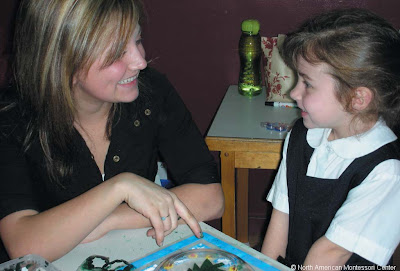Striving for and maintaining the Montessori “standard” is an ongoing commitment and practice for any Montessori school. Whether you are an experienced Montessori teacher or a Montessori administrator it is a good idea to occasionally take a look at your current program and make sure you can find evidence that what is happening in your school accurately reflects the Montessori philosophy of education as well as your school’s mission statement. Montessori teacher candidates and prospective Montessori parents are encouraged to visit several Montessori schools and make formal classroom observations so as to witness the Montessori philosophy and method in action. Using a checklist such the one below should help you get a sense as to whether or not the school is adhering to Montessori’s own principles.
Are We Following Montessori Principles? Observe Your Montessori Classroom and School With This Checklist
What would Dr. Montessori observe?"The environment must be rich in motives which lend interest to activity and invite the child to conduct his own experiences." (Maria Montessori. The Absorbent Mind.)
Environment:
- designed for the child through beauty, order, and simplicity
- utilizes mixed age groups
- maximizes independent learning and open-ended exploration
- maintains a calm, orderly environment
- materials are attractively displayed and stored appropriately
- materials are grouped by subject
- materials are sequenced by level
- materials are accessible to all students
- space is provided for large activities
- activities are diversified to accommodate learning and intelligence styles
- traffic patterns are established by placement of furniture
- designated “quiet” areas
- variety of work spaces
- student work is attractively displayed
- promotes freedom of movement and exploration
- encourages the natural social movements of children
- reflection of the personal style of the teacher
Teacher:
- warm and nurturing manner
- shows genuine interest in students
- uses the 3-period lesson
- engages and encourages students in lessons
- maintains a low-profile in the classroom
- models grace and courtesy
- uses a soft “inside” voice
- promotes peace and conflict-resolution within the classroom
- engages in positive, respectful redirection of inappropriate behaviors
Program:
- promotes respect for all cultures and peoples
- clear student expectations
- emphasizes responsible, personal choice
- collaboration between students as well as between teachers
- use of non-classroom resources, including “going-out” experiences
- provides on-going parent education
As much as possible, NAMC’s web blog reflects the Montessori curriculum as provided in its teacher training programs. We realize and respect that Montessori schools are unique and may vary their schedules and offerings in accordance with the needs of their individual communities. We hope that our readers will find our articles useful and inspiring as a contribution to the global Montessori community.
© North American Montessori Center - originally posted in its entirety at Montessori Teacher Training on Wednesday, October 21, 2009.
© North American Montessori Center - originally posted in its entirety at Montessori Teacher Training on Wednesday, October 21, 2009.



0 comments:
Post a Comment
Have questions or comments? Let us know what you thought about this article!
We appreciate feedback and love to discuss with our readers further.